What is an UPstander? It’s an individual, young or old, who sees wrongdoing or injustice and does something.
UPstanders speak up and take action. UPstander behavior is the opposite of bystander behavior. Bystanders watch something happen, and even though they may feel that it’s wrong, they never speak up or take action.
What does UPstander behavior look like in our schools and classrooms? When a student is being picked on, ridiculed, bullied, or purposely left out, other students stand up for him/her.
This is a valuable quote to share with students:
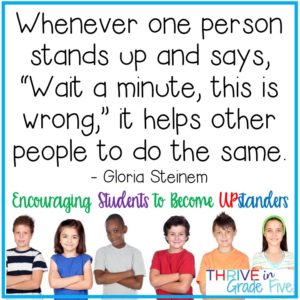
When teaching about this, I share a story from my past with my students.
When I was in 7th grade, my family moved to rural Indiana. We enrolled in a very small school with kindergarten through high school in one building. I was in that awkward middle school stage, like everyone else, and to top it off, I was painfully shy.
I soon witnessed some behavior that made me uncomfortable. There was a group of “popular” kids who enjoyed tormenting a girl in our class (I’ll call her Krista). They were relentless and sneaky about it.
I never said anything to those kids or to our teachers about what was going on. I was certainly what you’d call a bystander. I did not participate, but unfortunately, I never took action to call out the behavior of the bullies.
I still remember Krista’s face and most of the terrible things the other kids said to her. I am embarrassed to say that I did nothing to help her. However, looking back on this time in my past has inspired me many times to take action when a person is being treated badly.
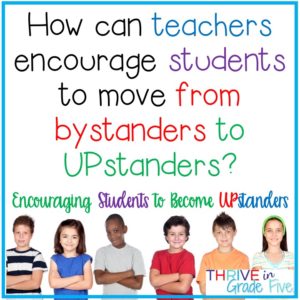
So, how can you encourage your students to move from bystanders to UPstanders?
I have three tips for you:
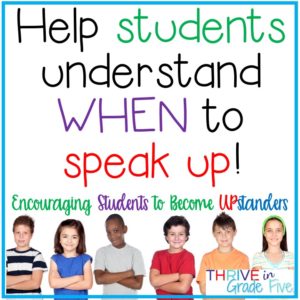
Teach your students WHEN to speak up!
Help students to understand the types of situations in which they should intervene. If a person is being hurt verbally, physically, or in some other way, they should not stand by and watch it. Encourage students to speak up either to the bully, to the victim, or tell a trusted adult what is going on.
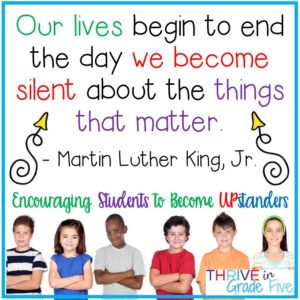
This quote by Martin Luther King, Jr. is thought-provoking for students. I like to display this quote on my bulletin board before, during, and after discussing UPstander behavior.
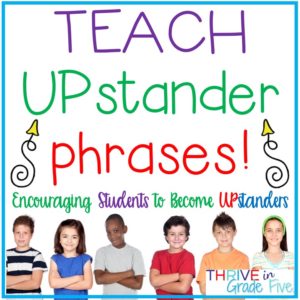
Teach UPstander Phrases!
Arm students with appropriate phrases to use when they are in a situation that requires them to be an UPstander. Some of my favorite phrases:
- Wait a second, this is not ok.
- Let’s take a step back and talk about this.
- It’s never ok to treat (or talk to) someone like this.
- We don’t say things like that in our school.
- That’s not nice. Please don’t treat him/her like that.
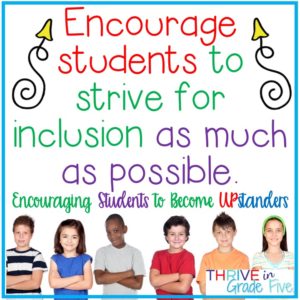
Encourage students to strive for inclusion as much as possible!
Encourage students to reach beyond their normal group of friends to help everyone feel included. Great times to do this are at lunch and recess. Why not invite the classmate who is usually left out to join your group for a while?
There’s a question that students should ponder from time to time:
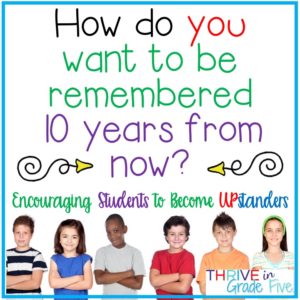
How do you want to be remembered ten years from now?
Will you be the person who was friendly to everyone? Someone who included the kids who were frequently left out? A gossip? A bully? (Hopefully not!)
Students should think about how they’ll want to be remembered by their classmates and tailor their actions accordingly.
My students complete short journal entries daily and this is a question that I ask them to write about once per semester.
Considering how others think of them can really help students to be more careful and aware of their words and actions.
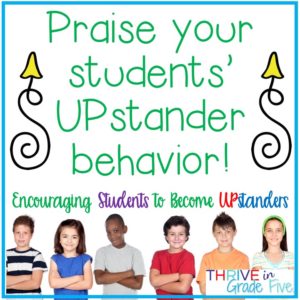
Praise your students’ UPstander behavior!
Remember to be as positive as possible when guiding students to become UPstanders.
There’s not really a need to give students a tangible item to praise them for being an UPstander. The reward for being an UPstander should be felt intrinsically.
However, I find that it’s good practice to let a student (or students) know that you noticed their UPstanding behavior.
Example: Brad, I saw that you helped your friend when the other kids laughed at him for tripping over his shoelaces. I like that you told your classmates to think about how they would feel if they tripped and everyone laughed at them.
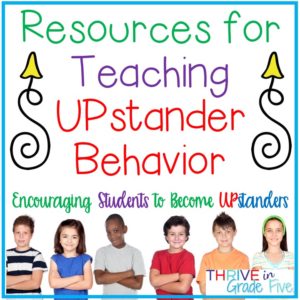
Here are two websites that I love to use for UPstander resources:
Not in our town/Not in our school https://www.niot.org/nios/about
Thanks for reading!

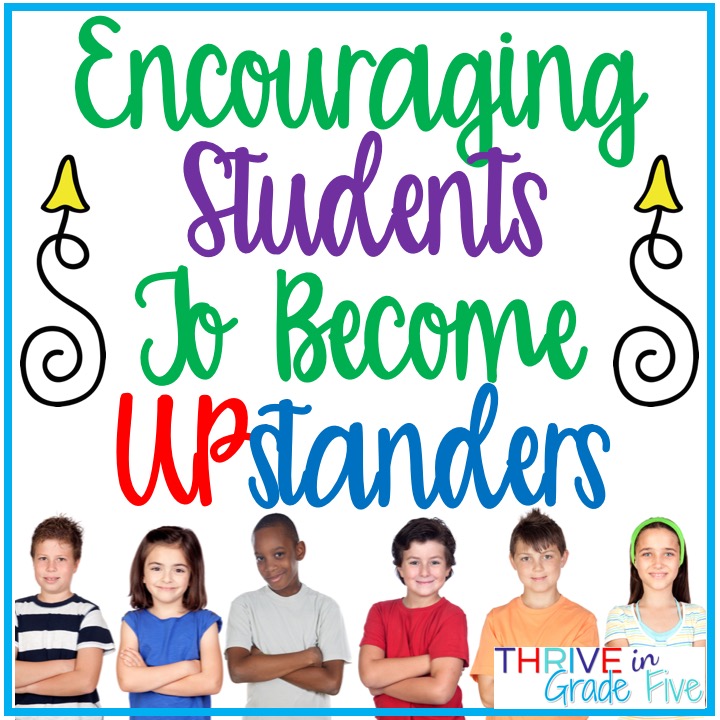
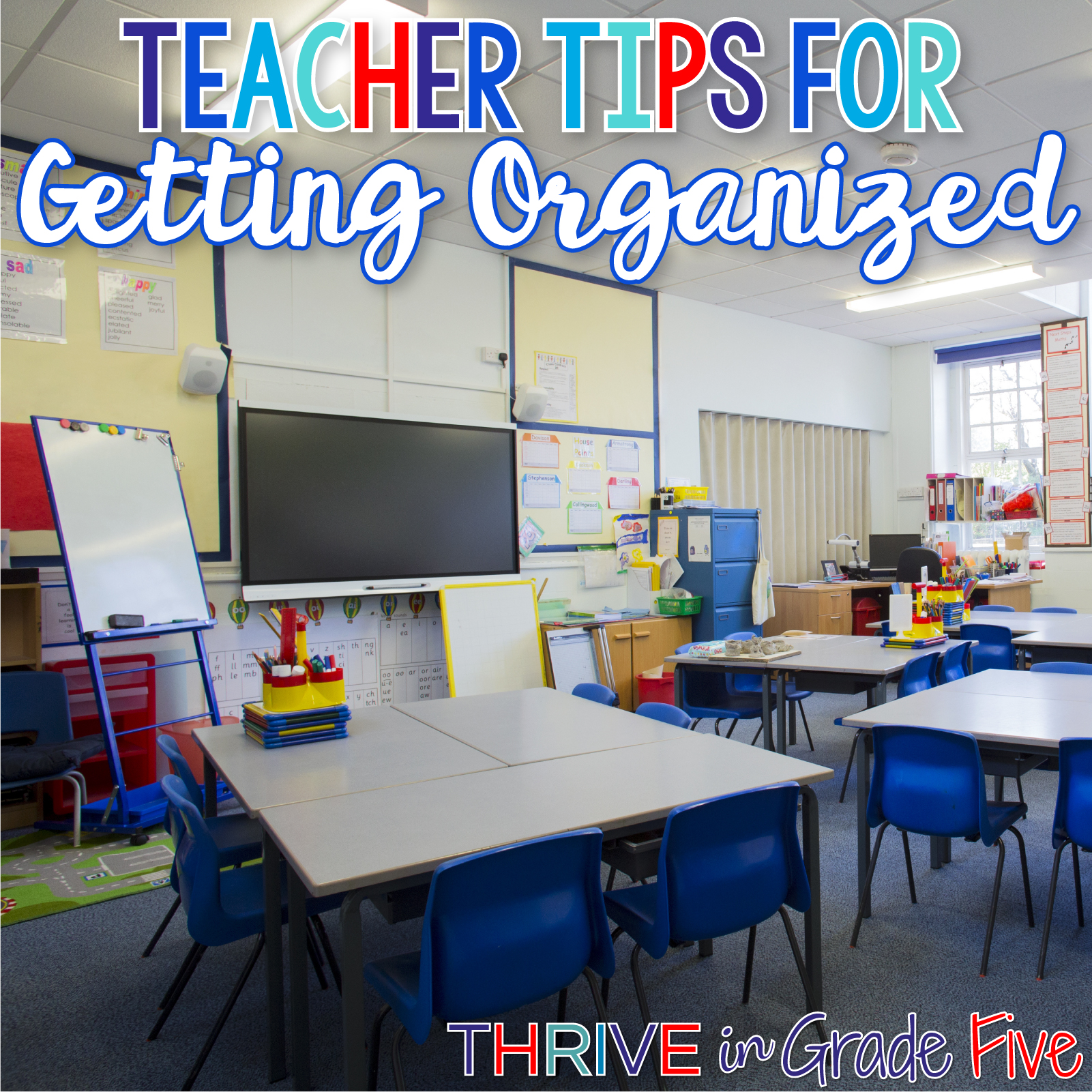

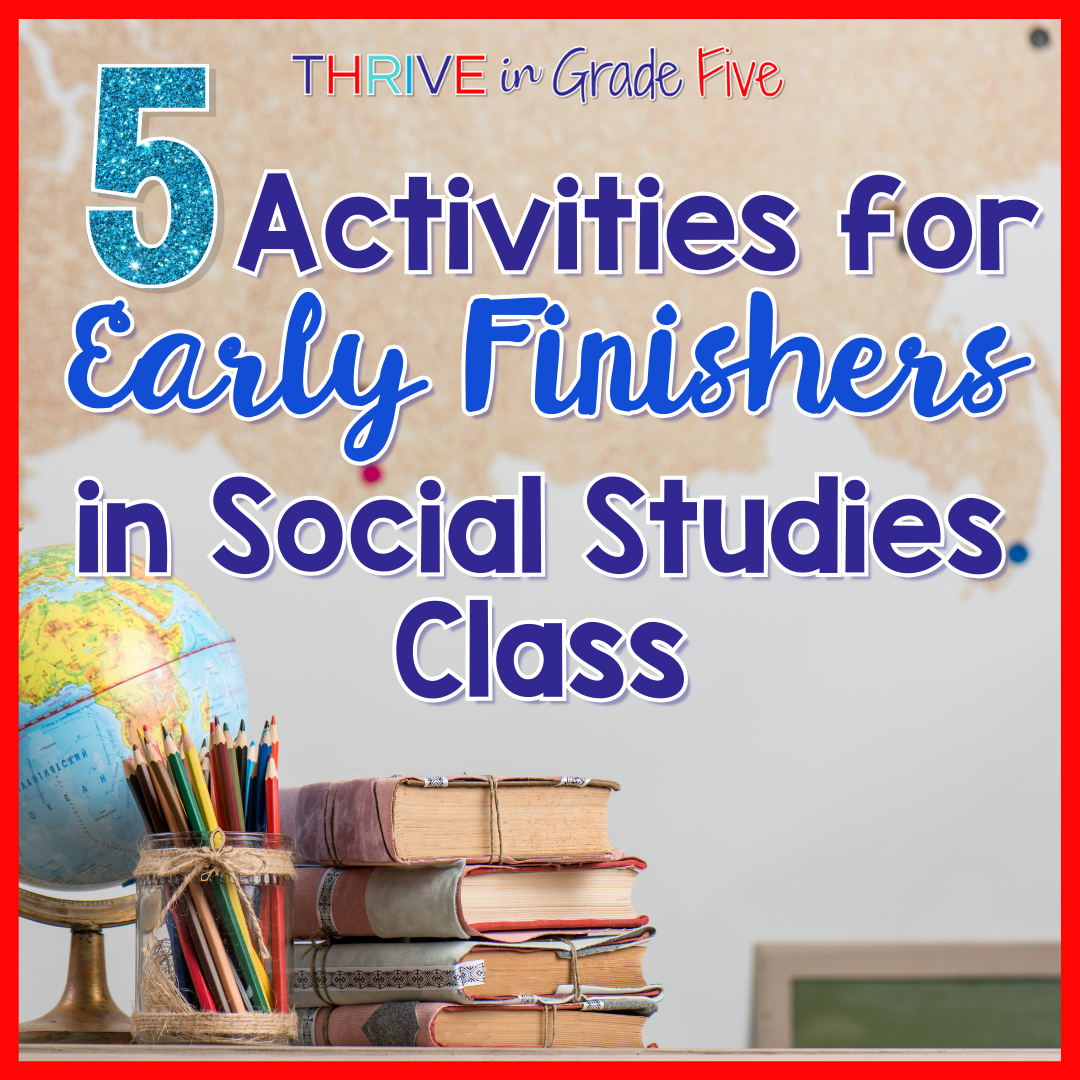
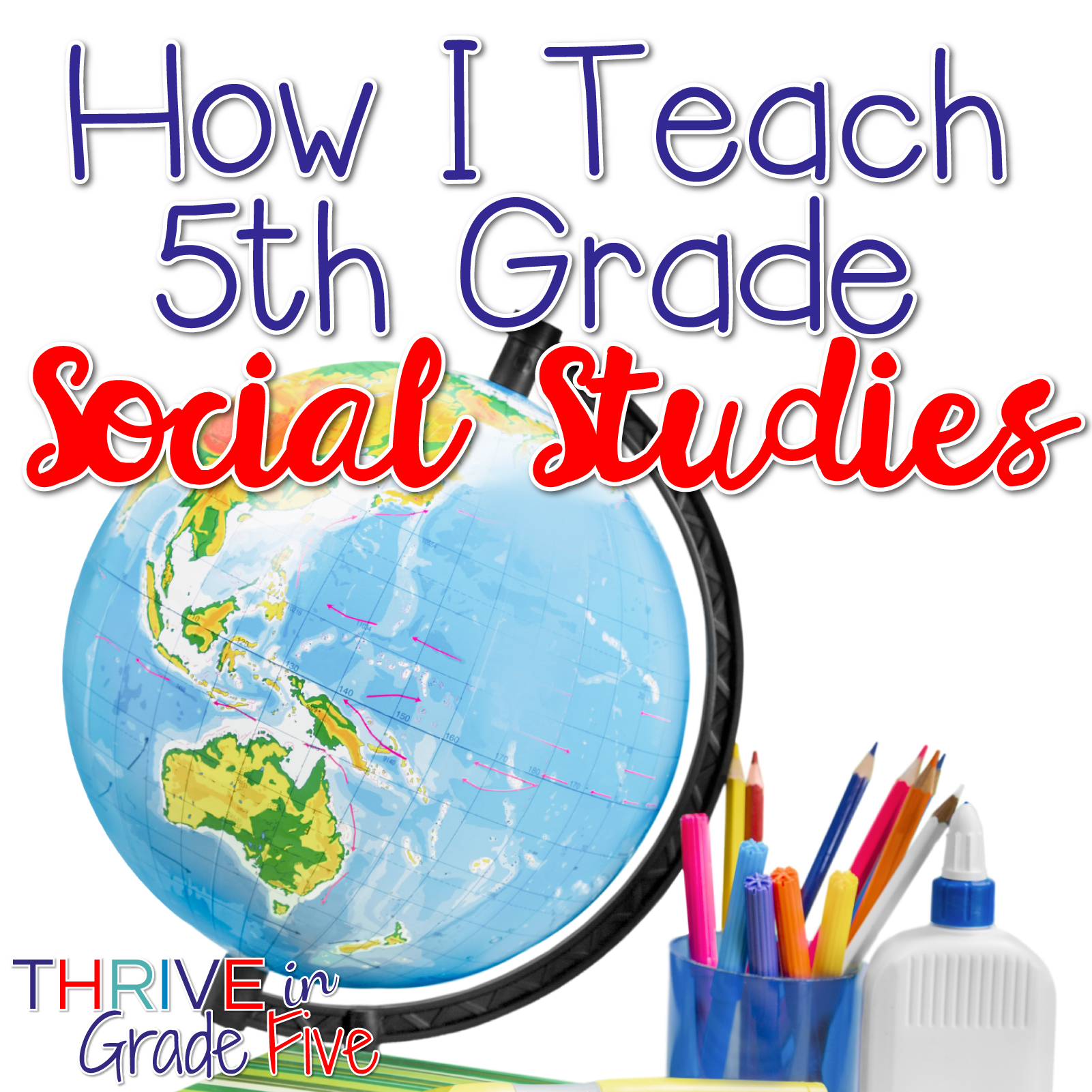


8 Comments
This is really great. Thanks
You are so welcome, Sylvia! Thank you for taking the time to leave a comment!
One of the ways I love to recognize this “Upstanding” citizen behavior with my fifth graders is by placing a small traffic cone, bought at the Dollar Store on the “Upstanding” student’s desk. I have different cones with different phrases. The student leaves this on his/her desk for the day. After the students have left at the end of the day the cone on his/her desk reminds me to make a quick positive contact phone call to the student’s parent. My students seem to really soak this up.
I love this idea, Christine! Thank you for sharing 🙂
I was just reading an article circulating Facebook from a writer who was treated unkindly by a group of women. She goes on to talk about how one person can change this by stepping up and being kind. Then, I checked my email and found your ideas. I will definitely use this in my classroom this fall. Thank you for sharing!
Thank you for that comment, Michelle! One person can absolutely change things!
I LOVE this!!! Any chance you’ve created UpStander phrase posters like the ones you’ve used on this site?
Hi Angela! Thank you for taking the time to leave a comment. I have not created upstander phrase posters but I will definitely put that on my to-do list for the future!